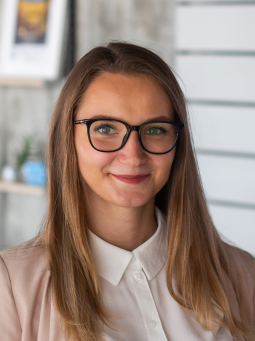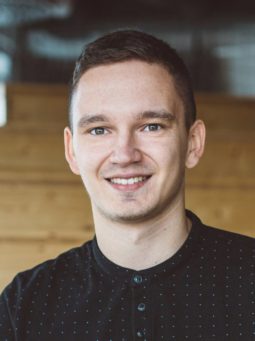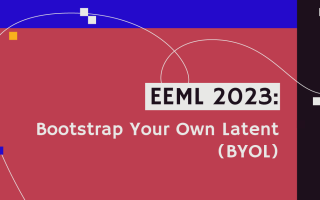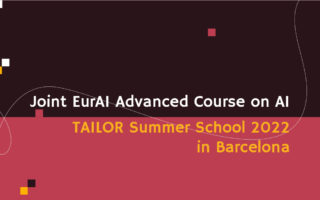What's
EEML Deep Learning Course or Meet & Greet Your Supervisor
This July, the scenic city of Košice, Slovakia, hosted the Eastern European Machine Learning (EEML) Summer School, an event that had us brimming with excitement. As PhD students from Bratislava, the proximity of this year’s summer school was a blessing, enabling us to attend in person. In this article, we’re excited to share our experiences and insights from some parts of the EEML Summer School, which proved to be an invaluable opportunity to delve into the world of deep learning and reconnect with one of our esteemed external supervisors, Jana Košecká.
The EEML Summer School Experience
The EEML Summer School, a renowned gathering of machine learning enthusiasts, is a platform that brings together students, researchers, and professionals from across Eastern Europe, but also beyond the continent. With a packed schedule and an impressive lineup of speakers, this year’s event promised to be nothing short of excellence.
A Dive into Deep Learning
The first day of the summer school kicked off with a series of lectures that set the stage for an exciting week of learning. It was the perfect start to our deep learning journey.
Razvan Pascanu, an influential researcher in the field of deep learning, delivered an outstanding lecture on the fundamentals of deep learning. His expertise and engaging presentation style made complex concepts accessible to everyone, from beginners to advanced researchers. We were captivated by his insights into the neural networks that power many of the AI applications we encounter daily. He started with simple and basic concepts of Artificial Intelligence and Machine Learning, on which he then built the theory behind nowadays widely used machine and deep learning models.
Rastislav Papšo:
“I was surprised how effectively Razvan explained such difficult and complex concepts like optimization theory or functioning of neural networks in such an intuitive manner that even people with no or very little knowledge about the field would feel like experts after the lecture. He started the lecture with a reminder that machine learning and deep learning are nothing more than just applied statistics and linear algebra. Then, with the basics in mind, he continued with explaining how these mathematical concepts can be leveraged in order to obtain deep learning tools we now use in everyday life (yes, ChatGPT, I’m talking about you). Personally, I think that this lecture was definitely the highlight of the day.”
Ivana Beňová:
“For me, Professor Jana Košecká’s lecture was unquestionably the highlight of the day, perhaps even the highlight of the entire summer school. She had traveled all the way from Virginia, USA, to share her extensive expertise in the field of computer vision. With her wealth of experience in teaching at George Mason University, where she holds the position of a professor, her presentation was not only informative but also masterfully structured, making it, in my opinion, accessible even to students who were new to the world of computer vision.
The lecture itself provided a comprehensive overview of various aspects of computer vision, organized in a logical time-ascending order. Professor Košecká began by diving into the task of image classification. This task involves categorizing images into predefined classes based on their content. These classes can be different animal species, diverse environmental settings such as libraries or altars, as well as specific objects like laptops or lipsticks. The significant breakthrough in image classification came with the advent of deep learning networks, particularly convolutional networks.
Moving forward, the lecture ventured into the territory of object detection and localization. This challenge emerged because real-life images often contain multiple objects, making image classification an oversimplification of the complexities of real-world scenarios. The objective is not only to identify all objects within an image but also to correctly classify them while producing bounding boxes that precisely outline the objects. Professor Košecká dedicated some time to introducing R-CNN, Fast R-CNN, and Faster R-CNN models, shedding light on their performance.
Taking our exploration further, we briefly delved into the superstructure of object detection, which corresponds to the semantic segmentation task. In this task, the goal is object detection but on a pixel level. It involves identifying and grouping segments of the image that collectively constitute a single object. Additionally, Professor Košecká introduced us to lesser-known but equally intriguing tasks such as image colorization and rotation prediction.
Towards the end of the lecture, Professor Košecká emphasized the importance of focusing on specific tasks within the field of computer vision. She highlighted that knowledge obtained solely from images is often utilized in the study of multimodal inputs, such as for image-language datasets. This fusion of modalities is believed to represent the future of deep learning and AI.
Professor Košecká’s lecture not only deepened my understanding of computer vision but also served as an inspiring exploration of the diverse tasks and challenges within this dynamic field. Her expertise and engaging delivery left a memorable impression, and her insights will undoubtedly resonate in our future research endeavors.”
Supervised Learning Tutorial by Pavol Drotar
Pavol Drotar’s tutorial on supervised learning in JAX was another gem on the first day of the summer school. JAX is an open-source numerical computing library, and Pavol’s tutorial showcased its capabilities for machine learning tasks.
Ivana Beňová:
“With a well-structured series of Python notebooks, Pavol guided us through the JAX framework, making it accessible to both beginners and those familiar with machine learning. What made this tutorial particularly valuable was the availability of the Python notebooks on GitHub. This thoughtful approach ensured that our learning could continue even after the summer school concluded, serving as a valuable resource for the future.
The tutorial’s exercises were thoughtfully sequenced, progressing from basic tasks like loading datasets and creating simple linear regression models to the more complex challenge of training deep learning networks. This allowed us to build our skills incrementally, gaining confidence in our understanding of JAX with each step.
The tutorial also included a valuable discussion on the pros and cons of both PyTorch and JAX. While PyTorch is known for its user-friendly interface and extensive library support, JAX stands out for its ability to automatically differentiate Python and its flexibility for GPU and TPU acceleration. The tutorial empowered us to make informed choices when selecting a framework for our machine learning projects, taking into consideration the specific requirements of our research. We left the session equipped with new tools and techniques to apply in our research.”
Welcome drinks with everyone
Rastislav Papšo:
“After the exhaustive first day of lectures, we moved to Tabačka Kulturfabrik for a bit of relaxation in the form of welcome drinks. Social events like this are an immersive opportunity for meeting new people and having informal chats with the lecturers, not only about the lectures. We had the opportunity to meet with such legendary researchers as Peter Richtárik from King Abdullah University of Science and Technology, Jana Košecká from George Mason University, or Razvan Pascanu and Michal Valko from Deepmind. The wonderful summer weather enhanced the evening’s atmosphere, allowing us to interact with amazing people from all over the world who had come to EEML to acquire invaluable knowledge and explore current trends in Artificial Intelligence.”
The Importance of Face-to-Face Interaction
The EEML Summer School was not just about lectures and tutorials; it was also about forging connections and nurturing existing ones. For example our student Ivana Beňová had the opportunity to meet with her external supervisor Jana Košecká.
Ivana Beňová:
“Meeting my external supervisor Jana Košecká in person for the second time in my life was a special moment. We usually connect only online and we met only once a year ago, due to the geographical distance. It also reminded me of the value of face-to-face interaction in an increasingly digital world. Beyond discussing research topics, we had the opportunity to talk about life, aspirations, and shared experiences. Such personal interactions can often lead to new ideas and collaborations, making the summer school an essential event for any student pursuing a PhD degree.”
Why we think EEML Summer School Matters
The EEML Summer School goes beyond being a learning opportunity; it’s a platform for networking, mentorship, and personal growth. Here are a few reasons why the EEML Summer School matters:
- Expert Insights: The lectures and tutorials are delivered by experts in the field, providing a unique opportunity to learn from the best.
- Networking: The summer school attracts participants from diverse backgrounds, fostering a rich environment for networking and collaboration.
- Supervisor-Student Interaction: For students like us, it’s a chance to meet our supervisors face-to-face, strengthening the mentor-student relationship.
- Research Inspiration: Interacting with peers and mentors can spark new research ideas and directions.
- Personal Growth: Beyond academics, the summer school encourages personal growth and development.
Conclusion
Our experience at the EEML Summer School was nothing short of transformative. We delved into the world of deep learning, deepened our understanding of our research field, and had the privilege of meeting two of our external supervisors, Jana Košecká and Peter Richtárik. The summer school underscored the importance of in-person interactions in an increasingly virtual world and left us with lasting memories and valuable insights.
If you’re a student or researcher passionate about machine learning, we highly recommend keeping an eye on the EEML Summer School. It’s more than just a school; it’s an opportunity to connect, learn, and grow in the fascinating field of artificial intelligence and machine learning.



